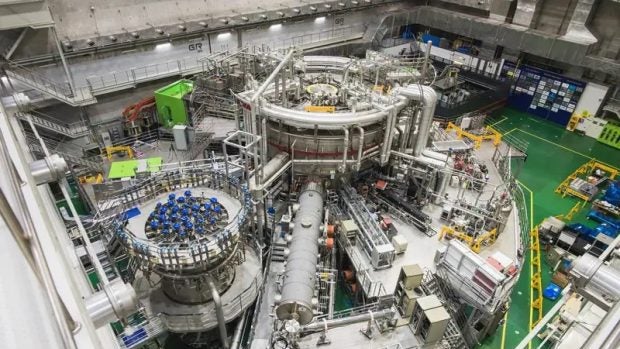Fusion reactor reaches 100 million degrees – for 30 seconds – t3n – digital pioneers

South Korean nuclear fusion reactor KSTAR. (Photo: Korea Institute of Fusion Energy)
Researchers have managed to sustain a nuclear fusion reaction at temperatures over 100 million degrees for 30 seconds. The combination of temperature and duration is exciting – are we getting closer to energy from nuclear fusion?
Clean energy from nuclear fusion – that would be a very desirable alternative for climate protection reasons and to be less dependent on gas and oil supplies from Russia or other countries. Researchers from the Korea Institute of Fusion Energy have now come a step closer to this goal.
The South Korean researchers were able to keep a nuclear fusion reaction stable for a period of 30 seconds at a temperature of over 100 million degrees Celsius, according to the New Scientist reported.
Neither the temperature reached nor the duration of the reaction represent new records – the combination is what observers regard as a further step towards a functioning nuclear fusion reactor. However, the technology used would still have to be scaled.
The team led by Yong-Su Na from the National University in Seoul attributed the fact that it was over after 30 seconds to the limitations of the hardware. Longer periods should be possible in the future. The results were published in the journal Nature released.
With their technology, the researchers rely on a modified internal transport barrier that is intended to prevent the escape of heat and plasma. Controlling the plasma is most important in fusion reactors.
Should the hot plasma touch the walls of the reactor, it would cool down quickly. The reaction, which uses hydrogen and deuterium gases as fuel, would stall. In addition, there would be major damage to the reactor wall.
South Korea has tried to raise the temperature at the core of the plasma and lower it at the edge, New Scientist writes. This could increase the lifespan of the components in the fusion reactor.
Suspicion of a fifth physical force is confirmed
The Korea Superconducting Tokamak Advanced Research (KSTAR) experimental reactor is currently being optimized. The carbon components on the reactor wall are to be replaced by tungsten. This should improve the reproducibility of the experiments, as Na explained.
It could be years, if not decades, before it is really possible to generate energy from nuclear fusion on a large scale. In addition to South Korea, corresponding technologies are also being researched in Europe, the USA, Russia and China. 35 countries are involved in the international thermonuclear experimental reactor (Iter) in France.


